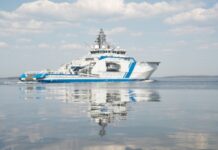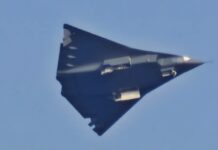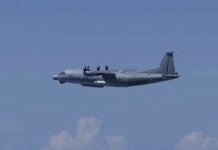The United States has reasserted and furthered its defence commitments to the Philippines, its “oldest ally in the Indo-Pacific”, as it seeks to check China’s pursuit of hegemony in the South China Sea and wider Pacific region.
With Philippine President Ferdinand Marcos Jr visiting US President Joe Biden in the White House on 1 May 2023, a joint statement by the two leaders was released that day that read, “President Biden reaffirms the United States’ ironclad alliance commitments to the Philippines, underscoring that an armed attack on Philippine armed forces, public vessels, or aircraft in the Pacific, including in the South China Sea, would invoke US mutual defense commitments under Article IV of the 1951 US-Philippines Mutual Defense Treaty.”
The statement went on to cite the US-Philippine Enhanced Defense Cooperation Agreement (EDCA) of April 2014, under which extended US troops rotations into the Philippines are intended to bolster the capabilities of the Armed Forces of the Philippines (AFP). While five base locations for US troops were agreed in March 2016 (Antonio Bautista Air base, Basa Air Base, Benito Ebuen Air Base, Fort Magsaysay and Lumbia Airport), on 3 April this year four new locations under the EDCA were announced: Balabac Island, Camp Melchor Dela Cruz, Lal-lo Airport and Naval Base Camilo Osias.
“The leaders welcome the identification of new sites pursuant to the US-Philippines Enhanced Defense Cooperation Agreement, which will strengthen Philippine security and support the Armed Forces of the Philippines’ modernization goals, while driving US investment to local communities across the Philippines and improving our shared ability to rapidly deliver humanitarian assistance and disaster relief,” read the joint statement.
In a passage more specifically focused on China’s forceful foreign policy in the region, the joint statement read, “The leaders underscore their unwavering commitment to freedom of navigation and overflight in the South China Sea, and the importance of respecting the sovereign rights of states within their exclusive economic zones consistent with international law. The leaders support the right and ability of Filipino fisherfolk to pursue their traditional livelihoods.”
The joint statement additionally noted the independent arbitral tribunal established under the UN Convention on the Law of the Sea (UNCLOS) to rule on China’s claims vis-à-vis the Philippines in the South China Sea, which on 12 July 2016 published a clear and binding ruling in Manila’s favour. The statement also even mentioned the sensitive topic of Chinese-claimed Taiwan, stating that the US and Philippine leaders “affirm the importance of maintaining peace and stability across the Taiwan Strait as an indispensable element of global security and prosperity”.
Despite the UNCLOS ruling, which China dismissed as worthless, Filipino fishermen and the Philippine Coast Guard continue to clash with their Chinese counterparts among the 7,500 islands and reefs collectively known as the Spratly Islands, many of which lie within the Philippines’ exclusive economic zone but are still claimed by China under its unilateral ‘nine-dash line’ claim over most of the South China Sea.

Beyond the mutually supportive public statements, the meeting between Biden and Marcos did see more concrete action from Washington to boost the capabilities of the AFP. A 1 May statement from the White House noted, “The United States and the Philippines are adopting Bilateral Defense Guidelines that institutionalize key bilateral priorities, mechanisms, and processes to deepen alliance co-operation and interoperability across land, sea, air, space, and cyberspace. The Guidelines support the continued modernization of the alliance and ongoing efforts to adapt alliance coordination to respond to the evolving security environment.”
The White House statement also outlined further US contributions of defence materiel for Manila. “The United States intends to transfer to the Armed Forces of the Philippines two Island-class patrol vessels, two Protector-class patrol vessels, and three C-130H aircraft, pending applicable Congressional notification requirements,” it said. “Additionally, two Cyclone-class coastal patrol vessels were transferred to the Philippines in late April, and are now en route to Manila. These transfers will support the Armed Forces of the Philippines’ modernization program by enhancing its maritime and tactical lift capabilities.”
The US-Philippines defence relationship became somewhat strained under the 2016-2022 presidency of Rodrigo Duterte, whose ‘independent foreign policy’ moved to restrict the defence relationship with Washington while courting China – even though the UNCLOS ruling came at the very beginning of his presidency. President Marcos, however, who is the son of the US-supported Philippine dictator Ferdinand Marcos Sr, is overseeing a return to closer US ties.
Peter Felstead













